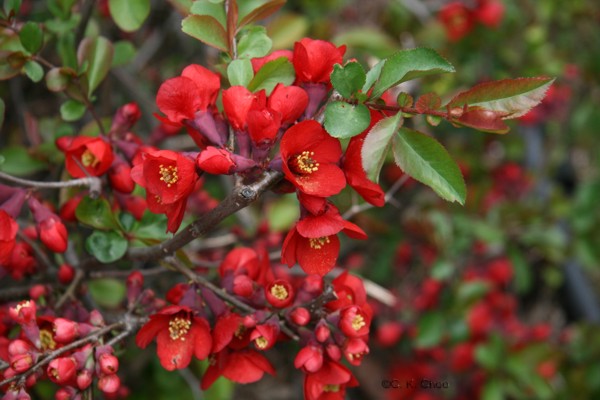Chaenomeles japonica
Common name: flowering quince
Family: Rosaceae
Leaf: deciduous or semi-deciduous, finely toothed, oval to oblong, glassy dark green leaves, up to 3.5" long. Spiny, tangled gray-brown twigs.
Flowers: Scarlet to red, five petaled flowers, up to 2" in diameter, bloom before the leaves fully unfold, early spring bloom (late March- April)
Fruit: hard, dot-specked, edible, yellowish-green fruits. Edible.
Habit: dense deciduous to semi-evergreen shrub; Form: broad-rounded
Height: 6-10' Spread: 6-10'
Culture: Easily grown in average, medium moisture, well-drained soils in full sun to part shade. Best flowering occurs in full sun. Adapts to a wide range of soil conditions, but prefers well-drained loams. Established plants have some drought tolerance. Plants bloom on old growth. Avoid heavy pruning in general. Prune to shape after flowering, which will improve the bloom the following year (promotes the growth of flowering spurs, making a more floriferous bloom for the following year). Remove root suckers to prevent spread if desired. Susceptible to fungal leaf spot and frost damage on buds if there is an early frost.
Uses: Hedge, screen, barrier. Specimen or group in shrub border or cottage garden. Branches ma be clipped and forced for winter bloom.
Origin: China



No comments:
Post a Comment